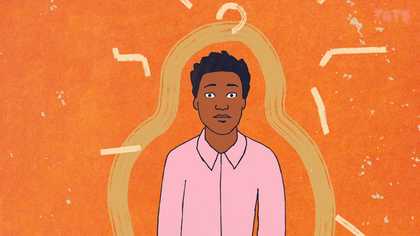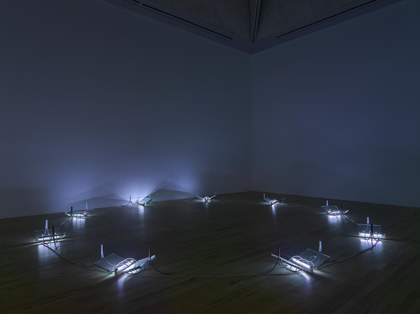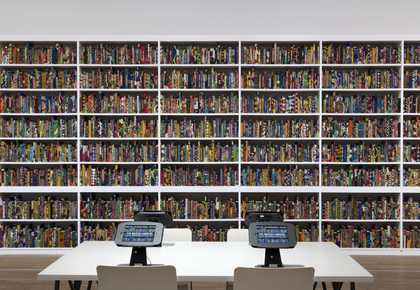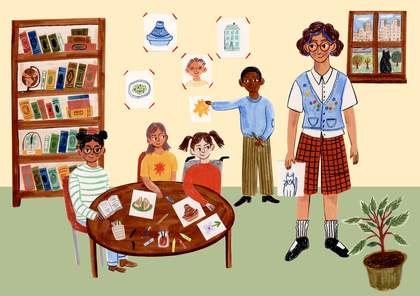

Yinka Shonibare
Meet an artist who connects different cultures and reveals hidden histories to explore globalism, hybridity and citizenship
About the video
Encourage your students to respond to the video in their own ways – perhaps by making notes, doodles or drawings, or through gestures and sounds.
Discover the life of artist Yinka Shonibare through this bright, colourful animation.
"People always want to categorise things.
I’m much more interested in this idea of a hybrid"
Yinka Shonibare
Shonibare’s work includes include painting, photography, dance, sculpture and film. He grew up between Lagos in Nigeria and London. His artworks explore relationships between Africa and Europe, asking us to think twice about culture and history.
Discuss
Your students' ideas and experiences are the best starting point for any discussion. Using the prompts, support meaningful and creative discussions in the classroom about the video’s key themes. Discover how Yinka Shonibare’s practice can inspire your students to learn with art.
Citizenship and Globalism
At art school Shonibare felt he didn’t have to be restricted by any one aspect of his own identity. He believed that his art didn’t have to be rooted in only one place but could be a statement about being a ‘citizen of the world’.
Prompts
- What do you think it might mean to be a ‘citizen of the world’? Are you a citizen of the world? Why, or why not?
- How do you think the world would be different if there were no countries or borders? What would change? Think about this from as many perspectives as possible. These prompt words might help: travel, ritual, religion, culture, shopping, law, decisions.
Hybridity
In the film Shonibare says, ‘People always want to categorise things. I’m much more interested in this idea of a hybrid’. A hybrid is made by combining two or more different things together.
Prompts
- Shonibare’s artworks include painting, photography, dance, sculpture and film. Why do you think he brings so many different artforms together? What is he trying to tell us?
- Why do you think people like to categorise things? Can you think of any other ways to understand the world around you? Think about this from as many perspectives as possible. These prompt words might help: organise, efficient, share, judge, value, pattern, connect, manage.
- What do you think might be made possible by bringing things together?
Cultures and Histories
Shonibare’s work connects different cultures and reveals hidden histories. By exploring the relationship between Africa and Europe, he asks us to think twice and challenge assumptions we might make.
Prompts
- What do you think Shonibare is asking us to think twice about? What hidden histories can you discover through his art?
- Think about your own cultures and histories – what objects, patterns, foods and ideas represent you? How could you share them with your classmates?
- Why do we need to challenge assumptions and stereotypes? How can you do this in your everyday life?
How to use Artist Stories
Introduce art and artists into your classroom with Artist Stories resources. The resources combine engaging videos and thoughtful discussion points to encourage confidence, self-expression and critical thinking. Art is a powerful tool for discussing the big ideas that impact young people's lives today.
- Explore the video:
- Read About the video to introduce the artist to your students.
- Project the video or watch it in smaller groups.
- Each video is between 3–10 minutes.
- Transcripts are included where available.
2. Discuss the video:
- Select discussion prompts from the list below to frame your conversation.
- Use a mix of individual reflection, pair work and group discussion.
- Use one set of prompts to explore a theme in depth or shape your discussion across different themes.
- Discussion prompts can also be used in a Q&A format.



